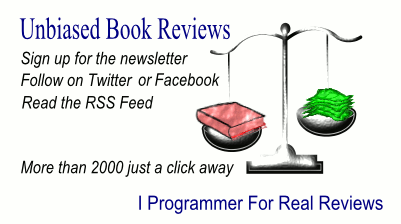| R for the Rest of Us |
|
Author: David Keyes I have to say that I was very against the idea of this book from the very start. It has the subtitle "A statistics-free introduction" which in my opinion is nuts for a language that is all about statistics - but I have to admit that there is a place for a book that teaches the language to potential users who know a lot about statistics and not much about programming. Clearly this is a book that could go one of two ways - let's see. The book starts out as all programming books must with a chapter on getting set up with a development environment - RStudio in this case. Then it proceeds into a mess of things that are going to confuse a beginner - arithmetic operators, functions, and then goes deep into importing data. Surely if we are doing without stats the books should start with basic non-data related ideas like loops and if statements. The chapter is called "An R Programming Crash Course" - sorry but I thought that the whole book was an R Programming course. The section that the crash course is in is called Visualizations and it is really all about using R to present data. Chapter 2 begins a statistics-lite approach to R with a look at data visualization using ggplot. It gets deep into data presentation, which is as much statistics as an analysis of variance. The approach is to discuss a case study and doesn't really help the beginner see the basic principle. Chapter 3 is about customizing graphics and Chapter 4 extends the topic to maps and geospatial data in general. The final chapter in the section is about designing tables - is this a visualisation technique? There is certainly no sign of a chi squared so perhaps it really is. Part II is titled Reports, Presentations and Websites and isn't so much about R as about how R fits in with the rest of the world. The topics covered include markdown, templates, slideshows, creating websites, and using Quarto. Part III is titled Automation and Collaboration. This covers gathering data from the web, and finally creating functions and packages which is about R.
This is a book with a lot of useful examples of gathering data and presenting it. What is is not about is the R language. At the end of the day it leaves you not knowing about a great deal of the R language - its control structures, its variable types, its arrays, whether it is object-oriented and so on. This is not a book about R and it claims to be not a book about statistics. In fact, it is a book about simple statistical procedures and methods that just happens to use R as its language of choice. If you know about statistics this is not the book for you. If you know enough R to get by and want to see it used mostly for presentation then you might feel more satisfied with it. To keep up with our coverage of books for programmers, follow @bookwatchiprog on Twitter or subscribe to I Programmer's Books RSS feed for each day's new addition to Book Watch and for new reviews.
|
|||
| Last Updated ( Wednesday, 07 May 2025 ) |
